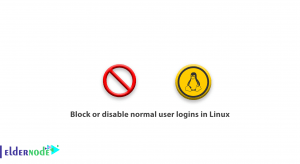
Creating a subdomain in cPanel can be a game-changer for your website. Whether you want to create a separate blog, a community forum, or a personalized web page, this guide will walk you through the process step by step. With this clever how-to guide, you’ll be able to leverage the power of subdomains to enhance your online presence and boost your website’s functionality. Let’s get started!
Table of Contents
5 Step to Create Subdomain in cPanel
Are you looking to divide and conquer your website by creating unique subdomains? Look no further, because we’ve got you covered with these 5 easy steps! Whether you’re a beginner or a seasoned developer, this guide will walk you through the process seamlessly. Using subdomains can help you organize your website, improve navigation, and enhance user experience. With our step-by-step instructions, you’ll be able to create subdomains within minutes, no coding skills required! Our simplified guide is designed to make the process painless, and you’ll master the art of subdomain creation in no time. Let’s dive in and master the art of creating subdomains in cPanel VPS!
Step 1: Log in to cPanel
Type your website domain name followed by “cpanel” in your browser’s address bar.
Now, Please add your cPanel username and password to access your account.
Step 2: Navigate to the Subdomains Section
Scroll down to the “Domains” section and locate the “Subdomains” icon.
Click on the “Subdomains” icon to access the subdomain management page.
Step 3: Create a New Subdomain
In the “Create a Subdomain” section, add the desired name for your subdomain in the “Subdomain” field.
Choose a unique name that represents the purpose of your subdomain (e.g., blog.example.com).
Choose the domain you want to associate with your subdomain from the drop-down menu.
The “Document Root” field will automatically populate with the suggested path for your subdomain’s content. If you want to use a custom path, you can modify it accordingly.
Step 4: Configure Advanced Settings (Optional)
“Create an FTP account associated with this subdomain”: Enable this option if you want to create a separate FTP account for your subdomain’s content.
“Create a MySQL database associated with this subdomain”: Enable this option if you require a separate database for your subdomain.
Click on the “Create” button to finalize the subdomain creation process.
Step 5: Verify Subdomain Creation
Return to the “Subdomains” section, where you should now see the newly created subdomain listed.
To ensure the subdomain works correctly, open a new tab and type the subdomain’s URL (e.g., blog.example.com) in the address bar.
If the subdomain loads without any issues, congratulations! Your subdomain is ready for customization.
If the subdomain doesn’t load, review the steps above and make any necessary adjustments.
Conclusion
Creating a subdomain in cPanel doesn’t have to be a complex process. With this clever how-to guide, you now have the power to expand your website’s functionality and enhance your online presence. Use subdomains wisely to organize your content effectively and provide more personalized experiences for your visitors. Start creating subdomains today and unlock endless possibilities for your website’s success!




